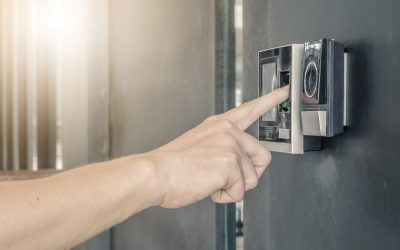One of the largest complaints that security system customer’s have is false alarms. In fact, in a nationwide study, 98% of all security system alarms turned out to be false alarms. This is where verified security raises the bar for the security industry.
With so many false alarms, especially in large cities, police dispatch response time is slowed because of limited resources and the likelihood of it being a false alarm. When you have an intruder entering your premise, you want to rely on verified security versus traditional security.
Verified Security Eliminates False Alarms
Verified security monitoring is when someone verifies that the alarm is real before dispatching the police.
With a traditional system, when an alarm signal is sent to a monitoring station, they have no idea what caused it. This usually leads to them making several phone calls, and people on the call list taking a guess as to the cause. How do you know whether it’s a false alarm or someone is actually breaking in?
With verified security when the alarm is tripped it turns on audio sensors and/or video monitoring. This way, the dispatch center can actually see and hear what’s going on inside. If they view and hear an attempted break-in, they will dispatch police first and then notify the person on the call list.
Police Respond Quicker to Verified Alarms
Police response is often slowed because of the number of false alarms. It’s the boy who cried wolf. When you have a verified system, the dispatch center will identify and explain to the authorities what’s going on. This creates a quicker response time since the police know they are responding to a true crime in progress. We can protect the valuable resource of our first responders to be spent for valid purposes in preventing crime & saving lives.
Full Coverage Monitoring
Another difference in verified security systems is having a 100% coverage area. This allows you to detect and identify people who are breaking in using unconventional ways. Most traditional alarm systems only place monitoring equipment in areas that are most common to break in. Verified security systems try to detect an intrusion before the would-be intruder even gains entry. An example of where verified security can be effective is if an intruder was breaking into the back of the building through the wall. The audio sensors can pick up the sound and trigger the alarm. Using video verification, the monitoring center can see people trying to gain entry and alert the authorities right away. They can be apprehended before ever gaining entry into the building. With a traditional system, the alarm wouldn’t have been triggered until after they entered and only if they triggered a motion detector.
No False Alarm Fees
In Louisville, Kentucky, false alarms are a big problem. In fact, you can be fined if you have more than three false alarms. After the third false alarm dispatch, it’s $100 for each additional false alarm. If you have 8 or more it goes up to $200 per additional false alarm dispatch.
These are the top three causes of false alarms:
- Personal Error
- Animals/Rodents
- Faulty Equipment
Verified audio and video detection systems can avoid these false alarms by verifying what caused the alarm before sending the authorities.
Motion detectors can only detect motion that is occurring right in front of it. So, if the intruder knows where the motion detector is located he could easily avoid setting them off. Also, if something were to fall off a shelf for instance, that would set off the motion detector and would cause the security system to think there is a burglary.
With verified security, the company would be seeing and hearing what’s going on in the room. It’s not just a blip on a screen.
When purchasing a security system, you should always choose verified security. It eliminates false alarms, offers better protection, saves money and resources, has a faster police response time and provides a better peace of mind.


